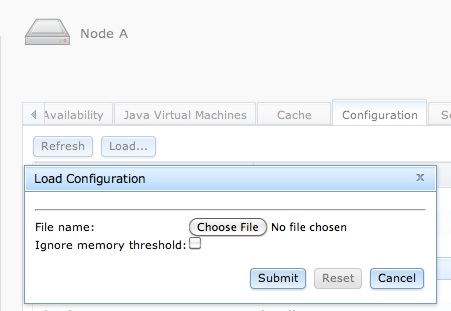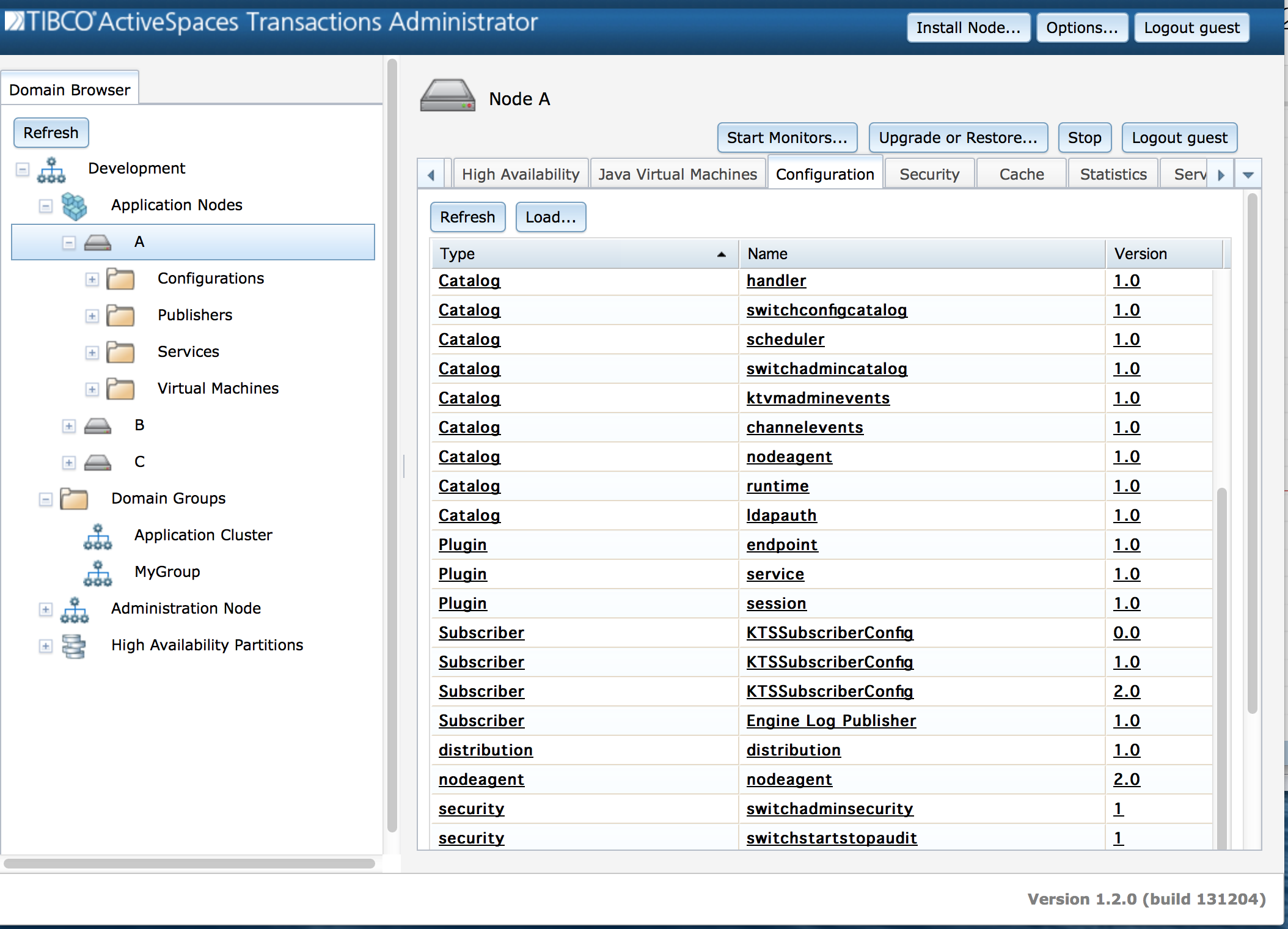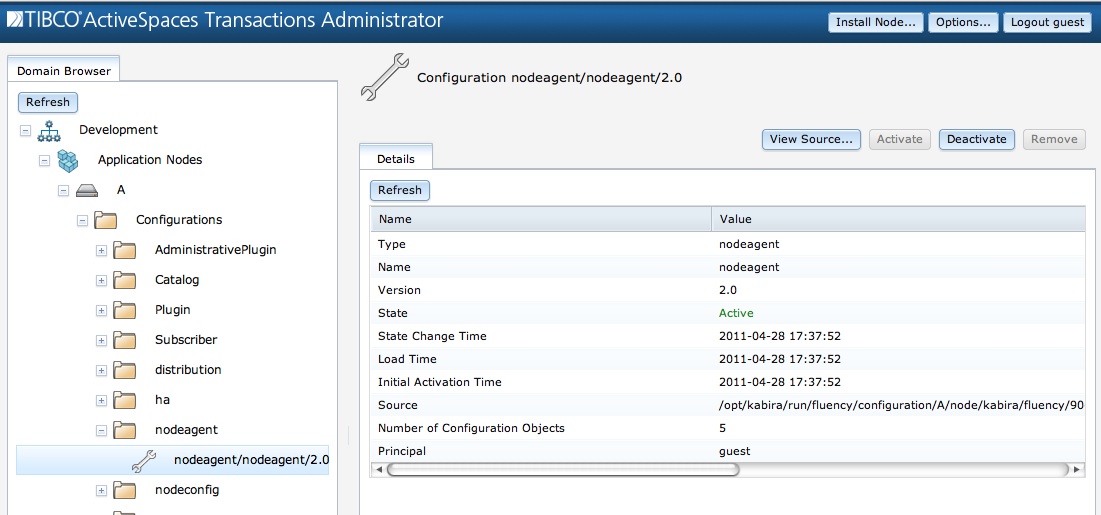This section describes how to manage node configuration. The configuration syntax is Human-Optimized Configuration Object Notation (HOCON). Complete syntax details are in the section called “Configuration syntax”.
A complete discussion of configuration life cycle can be found in the TIBCO StreamBase® Runtime Architects Guide. In summary configuration follows this life-cycle:
Configuration is loaded into a node
Configuration is activated
Configuration is deactivated
Configuration is removed from a node
Configuration is loaded into a node using either the Administrator dialog show in Figure 2.8, “Loading configuration” or this command:
epadmin --servicename=A.X load configuration --source=myConfiguration.conf
The Ignore memory threshold check box is used
to allow configuration data to be loaded in shared memory even if the
configured shared memory throttle utilization is exceeded (see TIBCO StreamBase® Runtime
Transactional Memory Developers
Guide for details). Without this override, attempting to load
configuration data into congested shared memory will fail.
All loaded configuration data can be displayed from the
Configuration tab for a node as shown in Figure 2.9, “Loaded configuration”, or using this
command:
epadmin --servicename=A.X display configuration
This information is displayed for each loaded configuration file:
Type - Configuration type.
Name - Configuration name.
Version - Configuration version.
State - Current state.
State Change Time - Time of last state change.
Load Time - Time configuration file was loaded.
Initial Activation Time - Initial time configuration was activated.
Source - Configuration source file path.
Number of Configuration Objects - Number of objects created from the configuration file.
Configuration activation, deactivation, and removal is done from the Administrator configuration screen show in Figure 2.10, “Managing configuration”.
Configuration state changes and also be done using these commands:
// // Activate a deactive configuration // epadmin --servicename=A.X activate configuration --type=com.tibco.ep.dtm.configuration.node --name=payments --version=1.0 // // Deactivate an active configuration // epadmin --servicename=A.X deactivate configuration --type=com.tibco.ep.dtm.configuration.node --name=payments --version=1.0 // // Remove configuration from shared memory // epadmin --servicename=A.X remove configuration --type=com.tibco.ep.dtm.configuration.node --name=payments --version=1.0
The button shown in Figure 2.10, “Managing configuration” can be used to export loaded configuration in a format that can be modified and reloaded. Configuration can also be exported using this command:
epadmin --servicename=A.X export configuration --type=com.tibco.ep.dtm.configuration.node --name=payments --version=1.0
Exported configuration can be used to determine exactly how a node is configured and also to easily make modifications to a node's configuration.
To make changes to an existing configuration, export the configuration, modify the configuration values as required, update the version number, and reload and activate the configuration on the node.
When a configuration is exported it contains any values initially set in the configuration along with all default values currently being used because the value was not explicitly set in the configuration when it was loaded.


